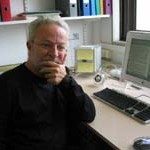Link to Pubmed [PMID] – 827945
Eur. J. Immunol. 1976 Oct;6(10):703-11
Glycoproteins have so far been the only surface components thought to be of importance in the process of recognition between circulating lymphocytes and endothelial cells of the lymph node post-capillary venules and thus in the control of lymphocyte traffic. In this paper the effect of in vitro treatment of 51Cr-labeled mouse lymph node cells with phospholipases (PL) (A and C) on their migration into syngeneic recipients was investigated. PL-A and PL-C treated cells migrated differently from control (untreated) cells. Diminished numbers of PL-A-treated lymphocytes were found in the lymph nodes at 1, 6 and 24 h after cell transfer with a simultaneous increase in the lungs at 1 h, and spleen at 6 h after transfer. PL-C-treated cells remained in the blood longer than untreated cells. We conclude that factors other than the integrity of surface glycoproteins are involved in the control of lymphocyte traffic. The roles played by cell adhesion, in particular cell-to-cell interactions in regulating the rate of cell migration, are discussed.
